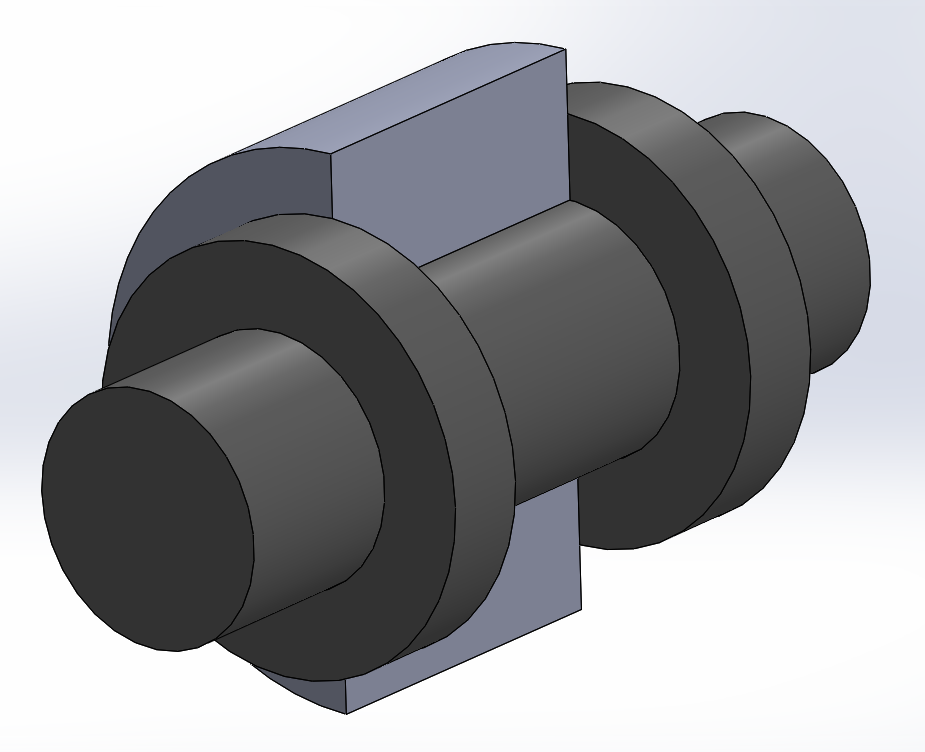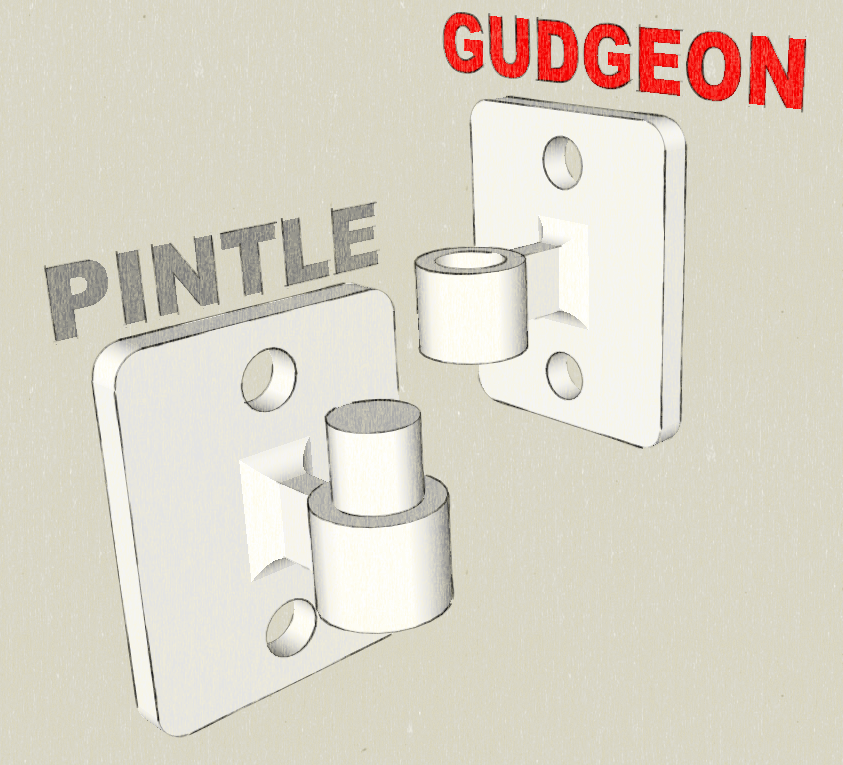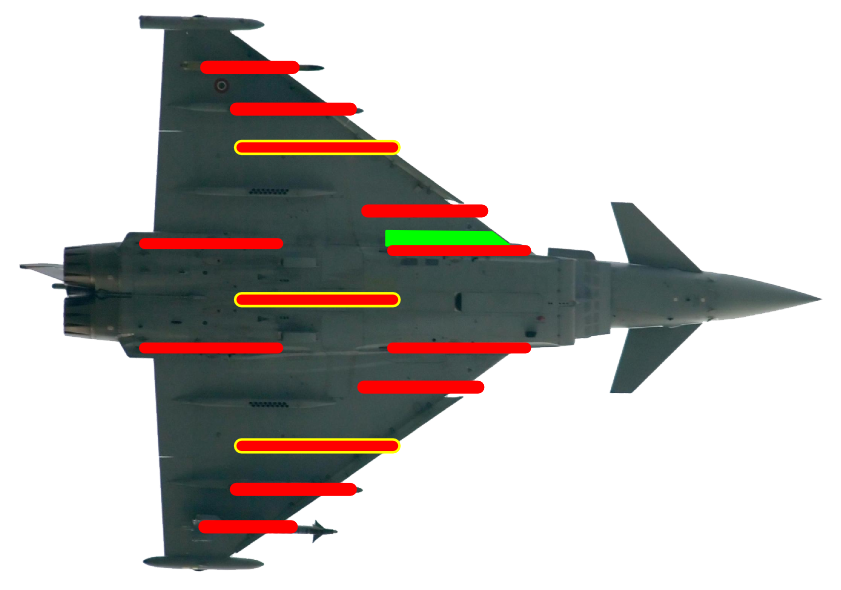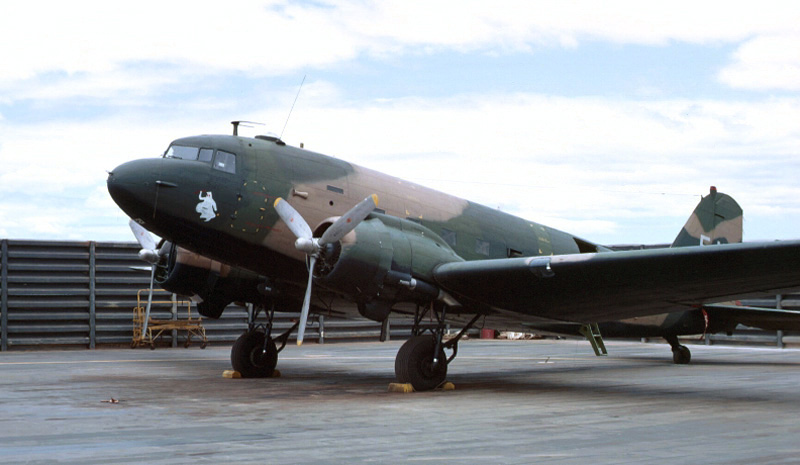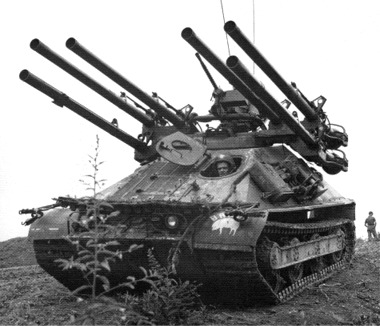|
Weapon Mount
A weapon mount is an assembly or mechanism used to hold a weapon (typically a gun) onto a platform in order for it to function at maximum capacity. Weapon mounts can be broken down into two categories: static mounts and non-static mounts. Static mount A static mount is a non-portable weapon support component either mounted directly to the ground, on a fortification, or as part of a vehicle. Turret A gun turret protects the crew or mechanism of a weapon and at the same time lets the weapon be aimed and fired in many directions. A turret is a rotating weapon platform, strictly one that crosses the armour of whatever it is mounted on with a structure called a barbette (on ships) or basket (on tanks) and has a protective structure on top (gunhouse). If it has no gunhouse it is a barbette, if it has no barbette (i.e., it is mounted to the outside of the vehicle's armour) it is an installation. Turrets are typically used to mount machine guns, autocannons or large- calibre guns. ... [...More Info...] [...Related Items...] OR: [Wikipedia] [Google] [Baidu] |
Mechanism (engineering)
In engineering, a mechanism is a Machine, device that transforms input forces and movement into a desired set of output forces and movement. Mechanisms generally consist of moving components which may include Gears and gear trains; belt drive, Belts and chain drives; Cam (mechanism), cams and cam follower, followers; Linkage (mechanical), Linkages; Friction devices, such as brakes or clutches; Structural components such as a frame, fasteners, bearings, springs, or lubricants; Various machine elements, such as splines, pins, or keys. German scientist Franz Reuleaux defines ''machine'' as "a combination of resistant bodies so arranged that by their means the mechanical forces of nature can be compelled to do work accompanied by certain determinate motion". In this context, his use of ''machine'' is generally interpreted to mean ''mechanism''. The combination of force and movement defines Power (physics), power, and a mechanism manages power to achieve a desired set of forces and ... [...More Info...] [...Related Items...] OR: [Wikipedia] [Google] [Baidu] |
Coaxial
In geometry, coaxial means that several three-dimensional linear or planar forms share a common axis. The two-dimensional analog is ''concentric''. Common examples: A coaxial cable has a wire conductor in the centre (D), a circumferential outer conductor (B), and an insulating medium called the dielectric (C) separating these two conductors. The outer conductor is usually sheathed in a protective PVC outer jacket (A). All these have a common axis. The dimension and material of the conductors and insulation determine the cable's characteristic impedance and attenuation at various frequencies. Coaxial rotors are a three-dimensional planar structure: a pair of helicopter rotors (wings) mounted one above the other on concentric shafts, with the same axis of rotation (but turning in opposite directions). In loudspeaker design, coaxial speakers are a loudspeaker system in which the individual drivers are mounted close to one another on the same axis, and thus radiate sound along t ... [...More Info...] [...Related Items...] OR: [Wikipedia] [Google] [Baidu] |
Swivel
A swivel is a connection that allows the connected object, such as a swivel gun, gun, swivel chair, chair, Caster, swivel caster, or an anchor rode to rotate horizontally or vertically. Swivel designs A common design for a swivel is a cylindrical rod that can turn freely within a support structure. The rod is usually prevented from slipping out by a nut, washer or thickening of the rod. The device can be attached to the ends of the rod or the center. Another common design is a sphere that is able to rotate within a support structure. The device is attached to the sphere. A third design is a hollow cylindrical rod that has a rod that is slightly smaller than its inside diameter inside of it. They are prevented from coming apart by flanges. The device may be attached to either end. A swivel joint for a pipe (material), pipe is often a screw thread, threaded connection in between which at least one of the pipes is curved, often at an angle of 45 or 90 degrees. The connection is t ... [...More Info...] [...Related Items...] OR: [Wikipedia] [Google] [Baidu] |
Pintle
A pintle is a pin or bolt, usually inserted into a gudgeon, which is used as part of a pivot or hinge. Other applications include pintle and lunette ring for towing, and pintle pins securing casters in furniture. Use Pintle/gudgeon sets have many applications, for example in sailing, to hold the rudder onto the boat; in transportation, in which a pincer-type device clamps through a lunette ring on the tongue of a trailer; and in controllable solid rocket motors, in which a plug moves into and out of the motor throat to control thrust. In electrical cubicle manufacture, a pintle hinge is a hinge with fixed and moving parts. The hinge has a pin - the pintle - which can be both external and internal. The most common type consists of three parts, one part on the body of the cubicle, one part on the door, and the third being the pintle. In transportation, a ''pintle hitch'' is a type of tow hitch that uses a tow ring configuration to secure to a hook or a ball combination for the ... [...More Info...] [...Related Items...] OR: [Wikipedia] [Google] [Baidu] |
Lynx Swivel Gun
A lynx ( ; : lynx or lynxes) is any of the four extant species (the Canada lynx, Iberian lynx, Eurasian lynx and the bobcat) within the medium-sized wild cat genus ''Lynx''. The name originated in Middle English via Latin from the Greek word (), derived from the Indo-European root (, ), in reference to the luminescence of its reflective eyes. Appearance Lynx have a short tail, characteristic tufts of black hair on the tips of their ears, large, padded paws for walking on snow and long whiskers on the face. Under their neck, they have a ruff, which has black bars resembling a bow tie, although this is often not visible. Body colour varies from medium brown to goldish to beige-white, and is occasionally marked with dark brown spots, especially on the limbs. All species of lynx have white fur on their chests, bellies and on the insides of their legs, fur which is an extension of the chest and belly fur. The lynx's colouring, fur length and paw size vary acc ... [...More Info...] [...Related Items...] OR: [Wikipedia] [Google] [Baidu] |
Hardpoint
A hardpoint is an attachment location on a structural frame designed to transfer force and carry an external or internal structural load, load. The term is usually used to refer to the mounting points (more formally known as a weapon station or station) on the airframe of military aircraft that carry list of aircraft weapons, weapons (e.g. gun pods and rocket pods), aircraft ordnance, ordnances (aerial bomb, bombs and guided missile, missiles) and support equipment (e.g. flare (countermeasure), flares and electronic countermeasure, countermeasures, targeting pods or drop tanks), and also include hardpoints (also known as pylons) on the wings or fuselage of a military transport aircraft, commercial airliner or private jet where external turbofan jet engines are often mounted. Aircraft In aeronautics, the term ''station'' is used to refer to a point of carriage on the frame of an aircraft. A station is usually rated to carry a certain amount of payload. It is a design number whi ... [...More Info...] [...Related Items...] OR: [Wikipedia] [Google] [Baidu] |
Stridsvagn 103
The Stridsvagn 103 (Strv 103), also known as the Alternative S and S-tank, is a Sweden, Swedish Cold War, Cold War-era main battle tank, designed and manufactured in Sweden. "Strv" is the Swedish military abbreviation of ''stridsvagn'', Swedish for tank (literally ''combat wagon'', it also is the Swedish word for chariot), while the ''103'' comes from being the third tank in Swedish service to be equipped with a 10.5 cm gun. Developed in the 1950s, it was the first main battle tank to use a gas turbine engine and the only mass-produced tank since World War II to not use a turret besides the German Kanonenjagdpanzer, which is not classified as a tank by role, but by design. It has an unconventional design with a unique gun laying process: it is Gun turret, turretless with a fixed gun Gun laying, traversed by engaging the Caterpillar track, tracks and Elevation (ballistics), elevated by adjusting the hull Suspension (vehicle), suspension. The result was a very low-profile desig ... [...More Info...] [...Related Items...] OR: [Wikipedia] [Google] [Baidu] |
AC-47 Spooky
The Douglas AC-47 ( "Puff, the Magic Dragon") was the first in a series of fixed-wing gunships developed by the United States Air Force during the Vietnam War. It was designed to provide more firepower than light and medium ground-attack aircraft in certain situations when ground forces called for close air support. Design and development The AC-47 was a United States Air Force (USAF) C-47 (the military version of the DC-3) that had been modified by mounting three 7.62 mm General Electric miniguns to fire through two rear window openings and the side cargo door, all on the left (pilot's) side of the aircraft, to provide close air support for ground troops. Other armament configurations could also be found on similar C-47-based aircraft around the world. The guns were actuated by a control on the pilot's yoke. The guns to be active for firing would be selected by an aerial gunner on a control panel on the right side of the cargo bay. Normally, two aerial gunners woul ... [...More Info...] [...Related Items...] OR: [Wikipedia] [Google] [Baidu] |
Schräge Musik
() was a common name for the fitting of an upward-firing autocannon or machine gun, to an interceptor aircraft, such as a night fighter. The term was introduced by the German during World War II. was previously a German colloquialism, meaning music that featured an unusual tuning and/or time signature (e.g., jazz). The standard usage of the adjective is often translated as " slanting" or "oblique", but its slang usage is often translated as "weird" or "strange". The first such systems were developed (though not widely employed) in World War I as anti-Zeppelin defenses by the French and British, in an era when fighters struggled to match the altitude capacity of the German airships and were forced to devise means to attack from below. The later resurrection of the concept by the Germans was inspired by observed weaknesses in the standard British night bomber aircraft of the WW2 era (the Avro Lancaster and Handley Page Halifax), which lacked ventral ball turrets in order to ... [...More Info...] [...Related Items...] OR: [Wikipedia] [Google] [Baidu] |
Spotting Rifle
A spotting rifle or ranging gun is a small-calibre rifle used as a ranging device for artillery. The ballistics of the spotting rifle are matched to those of the artillery piece, so that if a shot from the spotting rifle lands on the target, it may be assumed that the main weapon will also do so. Anti-tank recoilless rifles Spotting rifles were most commonly used with recoilless rifles as anti-tank artillery, from the 1950s to the 1970s. These weapons are used for direct fire with line-of-sight visibility to the target. As recoilless rifles have a relatively low muzzle velocity and thus a high trajectory, accurate ranging is important An optical sight can measure the bearing to a target, but not easily or accurately measure the range. Optical rangefinders were too large for lightweight portable artillery, and the later development of laser rangefinders would in turn make spotting rifles obsolete. The British BAT series of 120 mm anti-tank recoilless rifles used a ... [...More Info...] [...Related Items...] OR: [Wikipedia] [Google] [Baidu] |
Mk 153 Shoulder-Launched Multipurpose Assault Weapon
The Mk 153 Shoulder-Launched Multipurpose Assault Weapon (SMAW) is a smoothbore shoulder-fired rocket launcher. Primarily used as a portable assault weapon, or "bunker buster", it also possesses secondary anti-armor capabilities. Developed from the Israeli B-300, the SMAW was introduced to the United States Armed Forces in 1984. While it retains similar external characteristics to the B-300, the American-redesigned SMAW features a key distinction: the integration of a 9×51mm spotting rifle, which is an evolution of the one developed for the LAW 80. The spotting rifle's purpose is to enhance target acquisition and improve hit probability. The SMAW's main purpose is to destroy bunkers, buildings, and light armored vehicles during assault operations, using high-explosive dual mode (HEDM) rockets. The SMAW can also engage armored vehicles using high-explosive anti-armor (HEAA) rockets, which has a maximum effective range of against a tank-sized target. Operations in Iraq also ... [...More Info...] [...Related Items...] OR: [Wikipedia] [Google] [Baidu] |
M40 Recoilless Rifle
The M40 recoilless rifle is a portable, crew-served 105 mm recoilless rifle made in the United States. Intended primarily as an anti-tank weapon, it could also be employed in an antipersonnel role with the use of an antipersonnel-tracer flechette round. The bore was commonly described as being 106 mm caliber but is in fact 105 mm; the 106 mm designation was intended to prevent confusion with incompatible 105 mm ammunition from the failed M27. The air-cooled, breech-loaded, single-shot rifle fired fixed ammunition and was used primarily from a wheeled ground mount or M92 ground mount. It was designed for direct firing only, and sighting equipment for this purpose was furnished with each weapon, including an affixed M8C .50 cal spotting rifle. 297 M50 "Ontos" were built as self-propelled light armored tracked anti-tank vehicles. They had six 105 mm M40 recoilless rifles as their main armament, which could be fired in rapid succession against a single ... [...More Info...] [...Related Items...] OR: [Wikipedia] [Google] [Baidu] |

